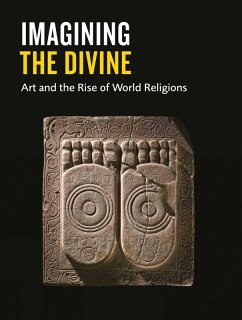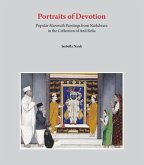* This is the catalog for a major exhibition, which is the first attempt to show the developing visual cultures of the world religions in the first millennium A.D. both individually and in dialogue with each other * The catalog tells both the stories of each individual religious culture and gives some hints as to shared themes and interconnections * The catalog contains a fine selection of illustrations, comparing the religions and their art Religion has always been a fundamental force for constructing identity, from antiquity to the contemporary world. The transformation of ancient cults into faith systems, which we recognize now as major world religions, took place in the first millennium AD, in the period we call 'Late Antiquity'. Our argument is that the creative impetus for both the emergence, and much of the visual distinctiveness of the world religions came in contexts of cultural encounter. Bridging the traditional divide between classical, Asian, Islamic and Western history, this exhibition and its accompanying catalog highlights religious and artistic creativity at points of contact and cultural borders between late antique civilizations. This catalog features the creation of specific visual languages that belong to five major world religions: Christianity, Judaism, Buddhism, Hinduism and Islam. The imagery still used by these belief systems today is evidence for the development of distinct religious identities in Late Antiquity. Emblematic visual forms like the figure of Buddha and Christ, or Islamic aniconism, only evolved in dialogue with a variety of coexisting visualizations of the sacred. As late antique believers appropriated some competing models and rejected others, they created compelling and long-lived representations of faith, but also revealed their indebtedness to a multitude of contemporaneous religious ideas and images. >Table of Contents: List of Contributors; Preface; Encounters; Religions in the Roman World; Gods in Combination; The Rise of the Image of Christ; Jewish Art; Scripture; Word as Image; Envisioning the Buddha; Amulets and Magic; Maidens and Mothers, Virgins and Lovers; Vishnu: The Enigmatic Image of a Deity; Sacred and Imperial Power; Iconoclasm; The Emergence of Islamic Art; Aniconism; Christianity in the British Isles; Sacred Space; Travelling Objects; Chronological Table; Map of the World (Britain to India) c.250 AD; Map of the World (Britain to India) c.850 AD; Index of Geographical Names; Index of Personal Names.
Hinweis: Dieser Artikel kann nur an eine deutsche Lieferadresse ausgeliefert werden.
Hinweis: Dieser Artikel kann nur an eine deutsche Lieferadresse ausgeliefert werden.








